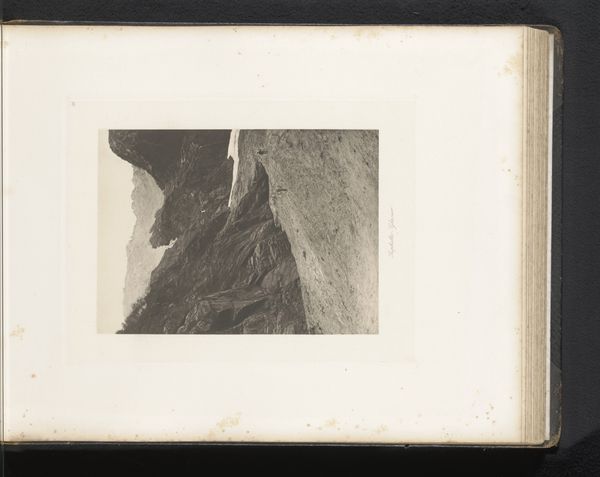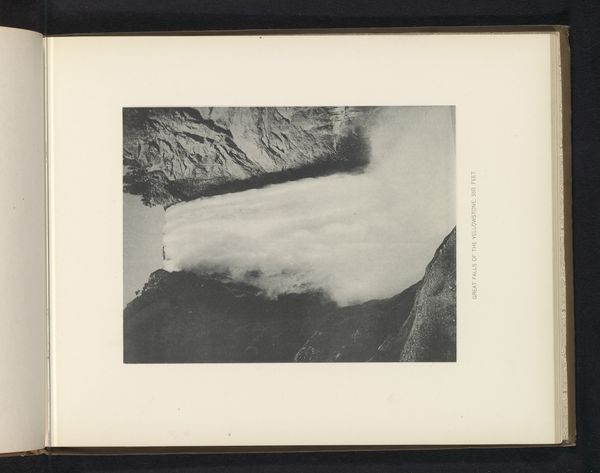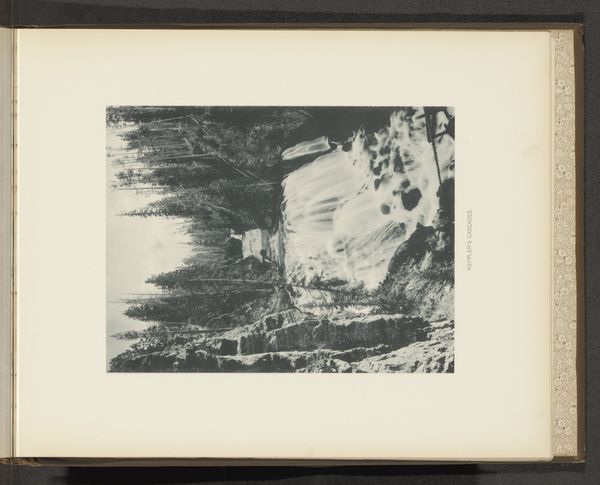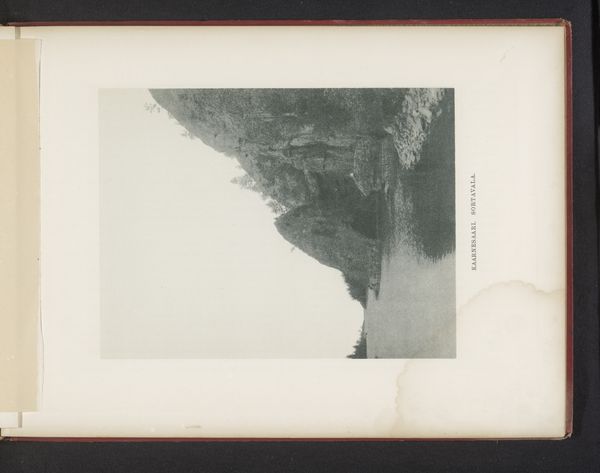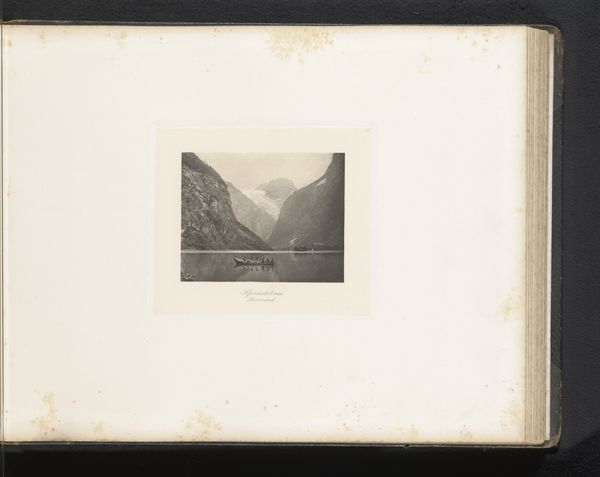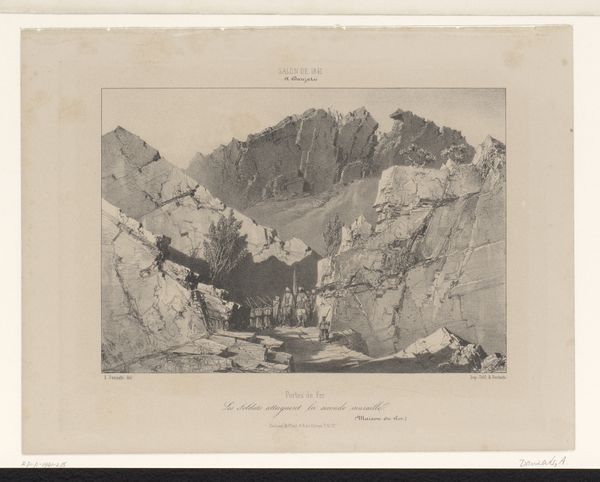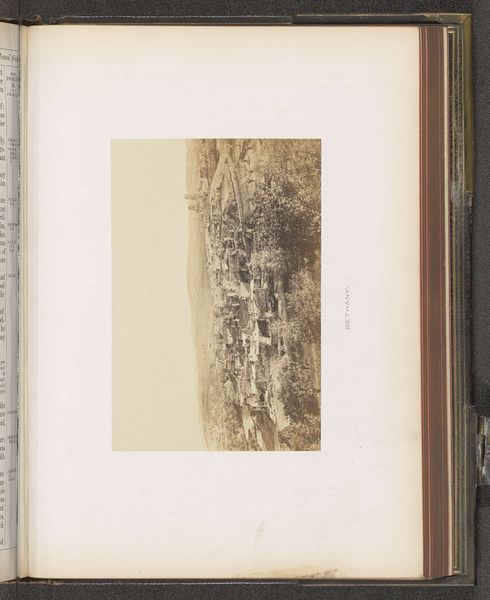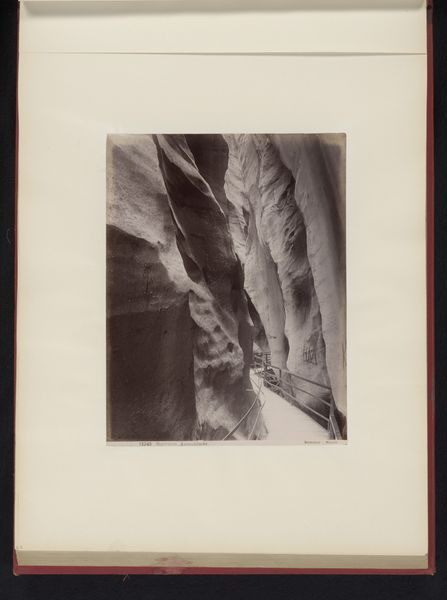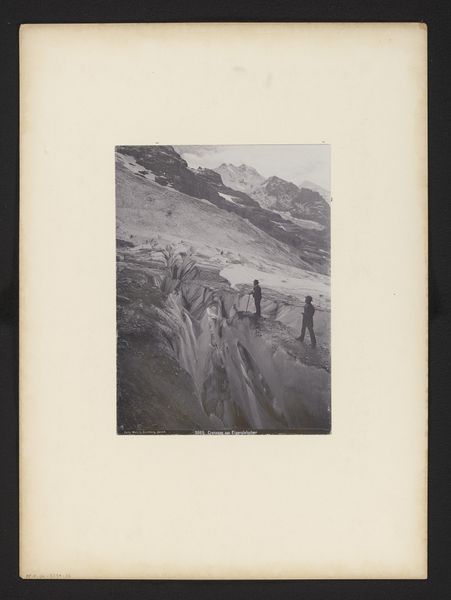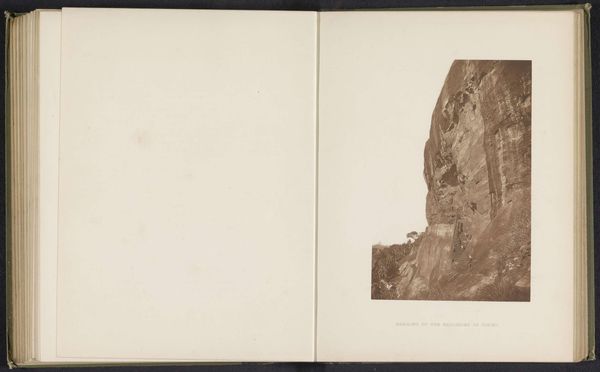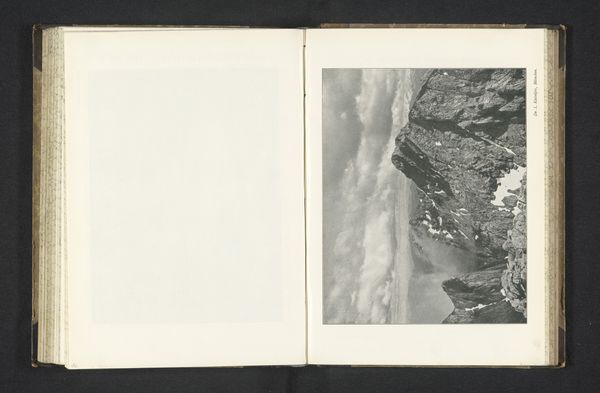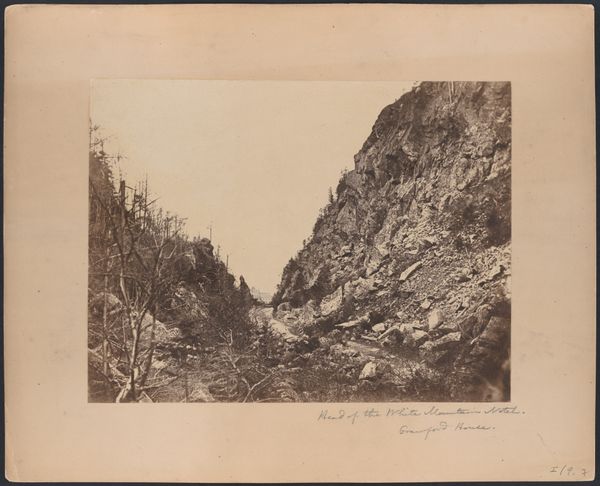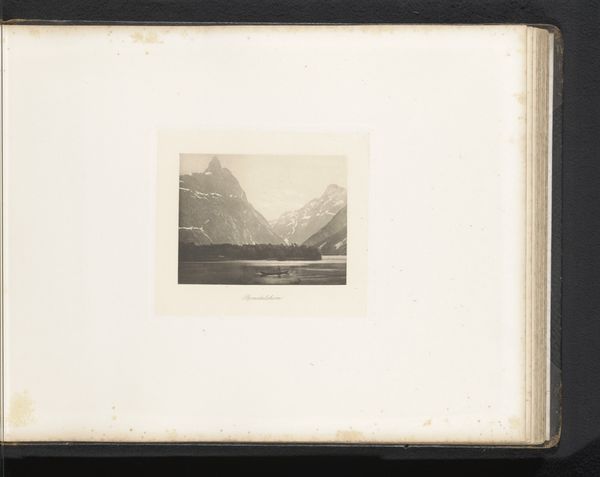
Dimensions: height 215 mm, width 165 mm
Copyright: Rijks Museum: Open Domain
Curator: Frank Jay Haynes created this gelatin silver print, titled "Inspiration Point, Grand Canyon," likely sometime before 1891. What’s your first take on this arresting landscape, Editor? Editor: Vertigo! The converging lines create such a precipitous perspective; it feels like I’m dangling over the edge. The monochrome palette really heightens the stark, raw beauty of the rock formations. Curator: The title tells us of a search for elevated meaning and speaks to the way sublime landscapes were often used to locate the divine in the late 19th century. You might see the influence of the Hudson River School here in the desire to connect spirituality and the environment. Editor: Right, there’s a dialogue being created through those tonal shifts between light and shadow – creating an implicit harmony out of what could just as easily be visually chaotic. Curator: Definitely. It presents a seemingly infinite space for potential… transformation? Exploration? The “inspiration” of the title resonates on multiple levels: geographical, aesthetic, and spiritual. It calls back to a period where American identity was intimately tied to westward expansion and ideas about Manifest Destiny. Editor: But look at how Haynes frames this "infinite" space. There is that tight composition forcing our eyes on a stark play of mass and void that really holds my attention more than a grand sense of limitless possibility. The tight focus emphasizes the sheer physicality of this canyon space. Curator: Yes, this work balances romantic idealism with concrete reality. The land held promise, yes, but also challenges to overcome. Perhaps the photographic medium lent itself to a more realistic view than idealized paintings could offer. Editor: I concur, although, Haynes' masterful use of tone makes the rocks into semi-abstract blocks of shape, which allows us to engage with the image on a deeply textural, sensual level as much as one of pure representation. Curator: An interesting synthesis, then, of exploration and aesthetic reduction. A pre-modern ecological encounter, and an exploration into modernist art? Editor: Absolutely. What started as a means of geographically understanding a place, developed into an intimate and enduring artwork, where geology became its own expressive form.
Comments
No comments
Be the first to comment and join the conversation on the ultimate creative platform.
